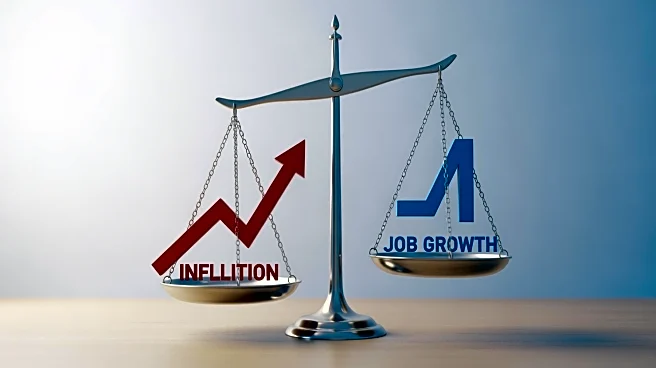What's Happening?
Deodorant prices are increasing, sparking widespread discussion on social media. The price hike is attributed to President Trump's tariffs on imported steel and aluminum, which have expanded to cover additional
categories, including personal care products like deodorant. These tariffs are part of Trump's strategy to boost U.S. manufacturing and address trade deficits. Despite the tariffs, experts suggest that the high price margins in beauty products mean the tariffs may not be the sole reason for the price increase. The Consumer Price Index rose by 0.1 percent in September, indicating ongoing inflation pressures, which also contribute to the rising costs of everyday items.
Why It's Important?
The increase in deodorant prices highlights broader economic challenges faced by U.S. consumers, including inflation and cost-of-living pressures. While tariffs aim to support domestic industries, they can lead to higher consumer prices, affecting affordability. The beauty industry, with its high price margins, may use these cost increases as a justification for raising prices, impacting consumer spending habits. This situation underscores the complex interplay between trade policies and consumer economics, with potential implications for public sentiment and economic policy debates.
What's Next?
As the holiday season approaches, consumers may experience further price increases in beauty products, driven by both tariff impacts and broader inflationary trends. Manufacturers and retailers might leverage cost increases to justify higher prices, potentially affecting consumer purchasing decisions. The ongoing discussion on social media reflects public concern, which could influence future policy considerations or consumer advocacy efforts. Monitoring these trends will be crucial for understanding the evolving economic landscape and its impact on consumer behavior.
Beyond the Headlines
The deodorant price increase serves as a case study in the broader implications of trade policies on consumer goods. It raises questions about the effectiveness of tariffs in achieving economic goals without disproportionately affecting consumers. Additionally, it highlights the need for transparency in pricing strategies within industries with high margins, prompting discussions on ethical business practices and consumer rights. This development may also influence cultural perceptions of value and affordability in personal care products.












